The aim is to reveal the unexpected and to leave space for interpretation.
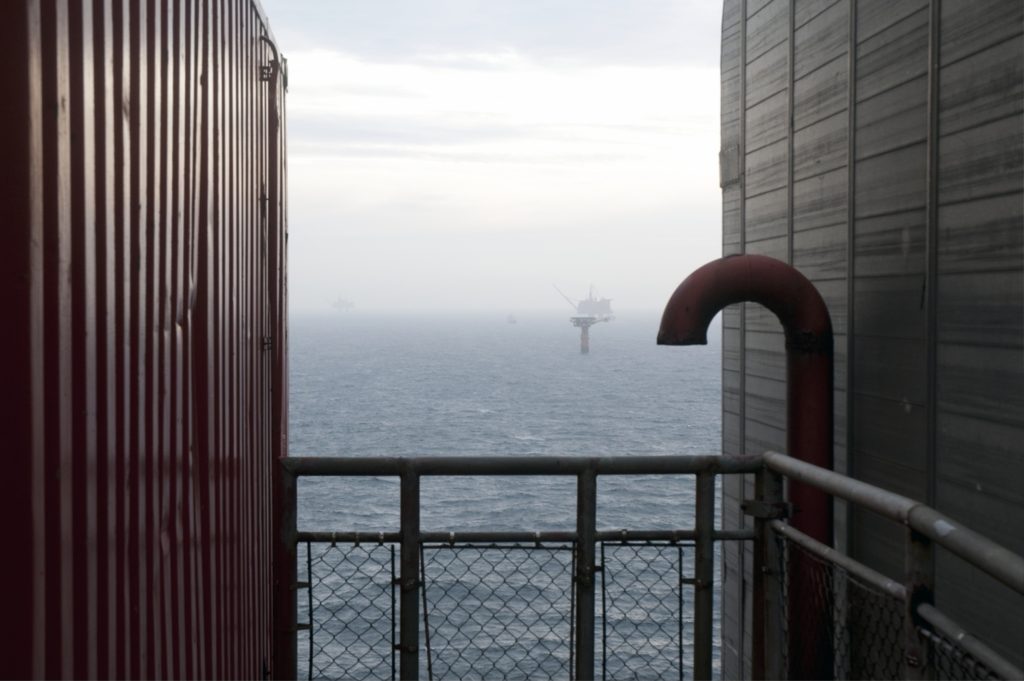
Examining an oil rig, it becomes apparent that it is a place full of contradictions, which does not seem to interact with its surroundings. In fact, an oil rig creates its own introverted world. In a post oil scenario, reprogramming these structures means rethinking their role and appearance. The aim of a new concept is to overcome the former introversion and to connect the structure with its environment, but also to emphasize the prevailing contrast between invader and nature.
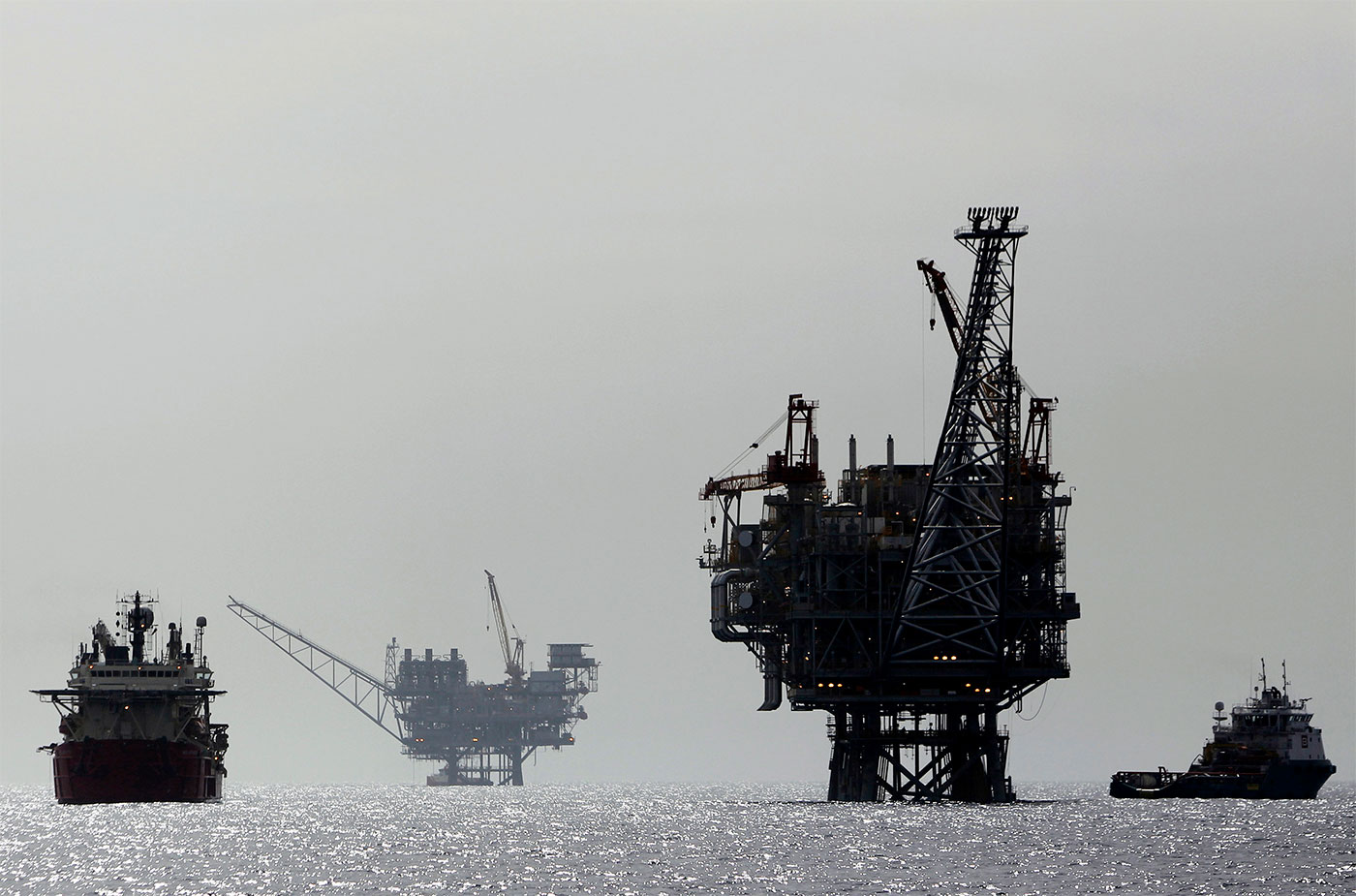
Adaptive Reuse Approach
To recognise and to further emphasize the extraordinary characteristic and the spirit of the Norwegian offshore facility provides the framework for the introduced adaptive reuse approach. A variety of actions and design interventions is introduced, with the aim to reveal the unexpected and to leave space for interpretation.

Most of the equipment will be removed, leaving an empty shell.
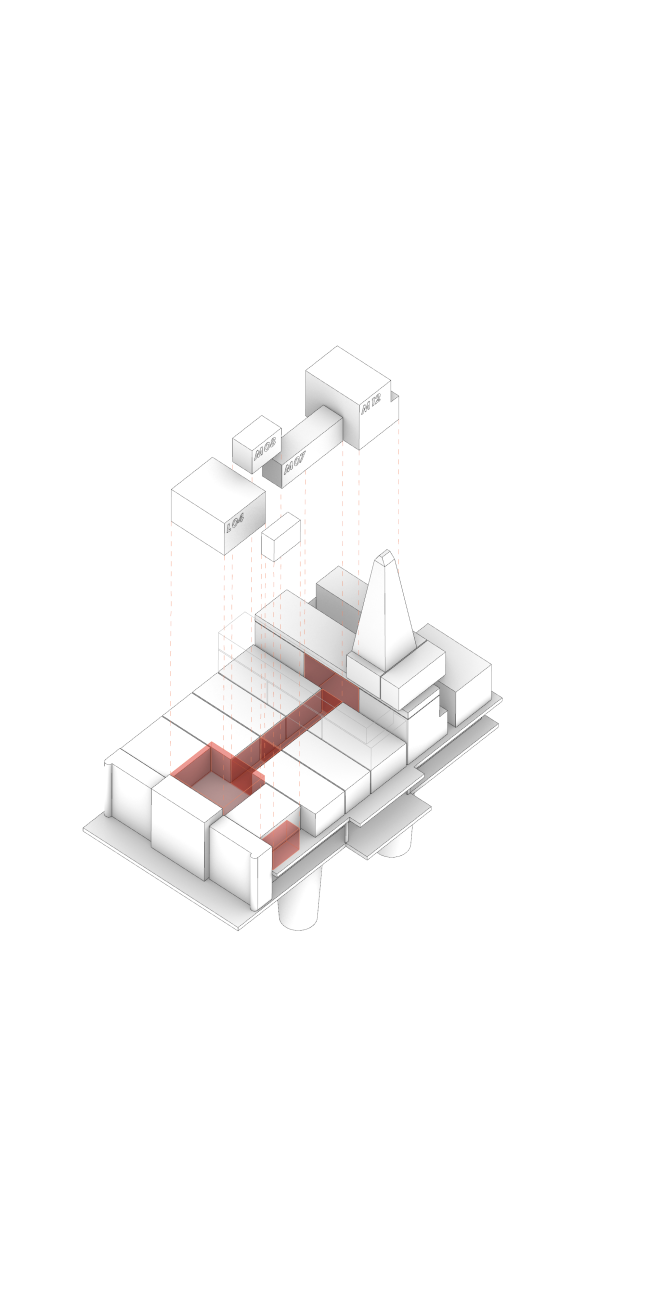
The former living quarter module L04, the office module on the southern facade as well as the modules M07, M08 and M12 will be dismantled.
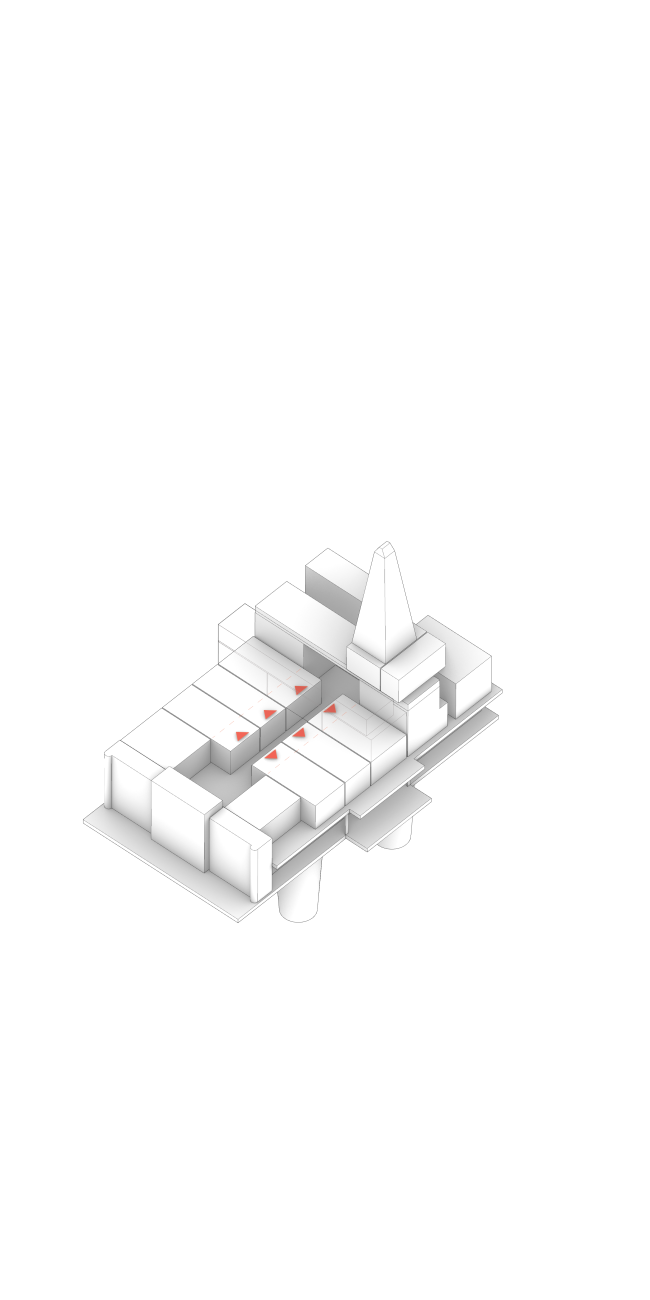
The walls of the inner modules will be partly removed with the objective to unveil the structures‘ skeleton.
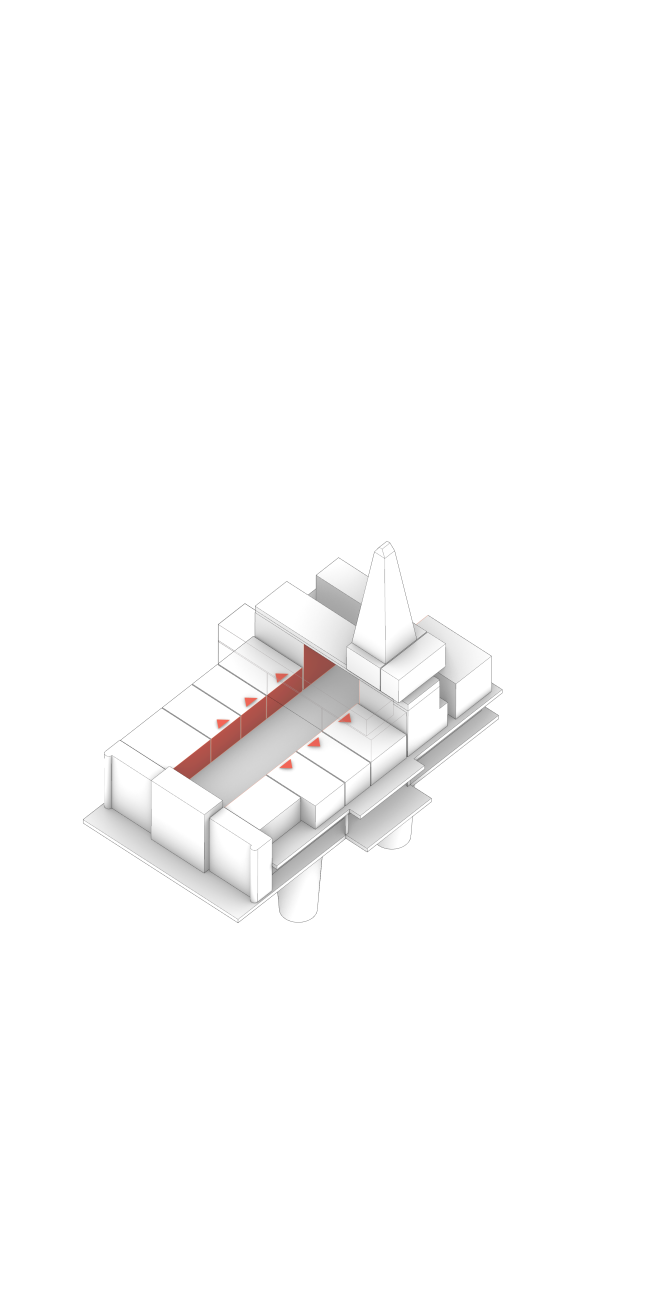
As a result, a clearing is created along the east-west axis.
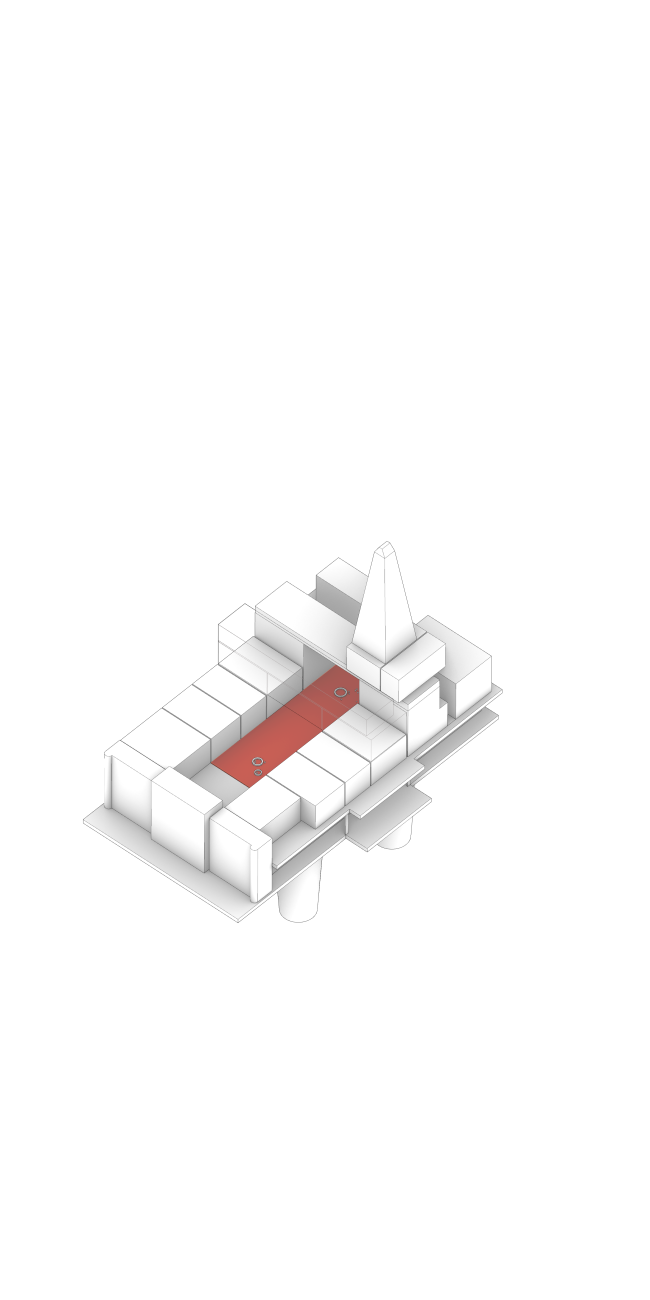
A permeable double height atrium space is formed in the center of the platform.
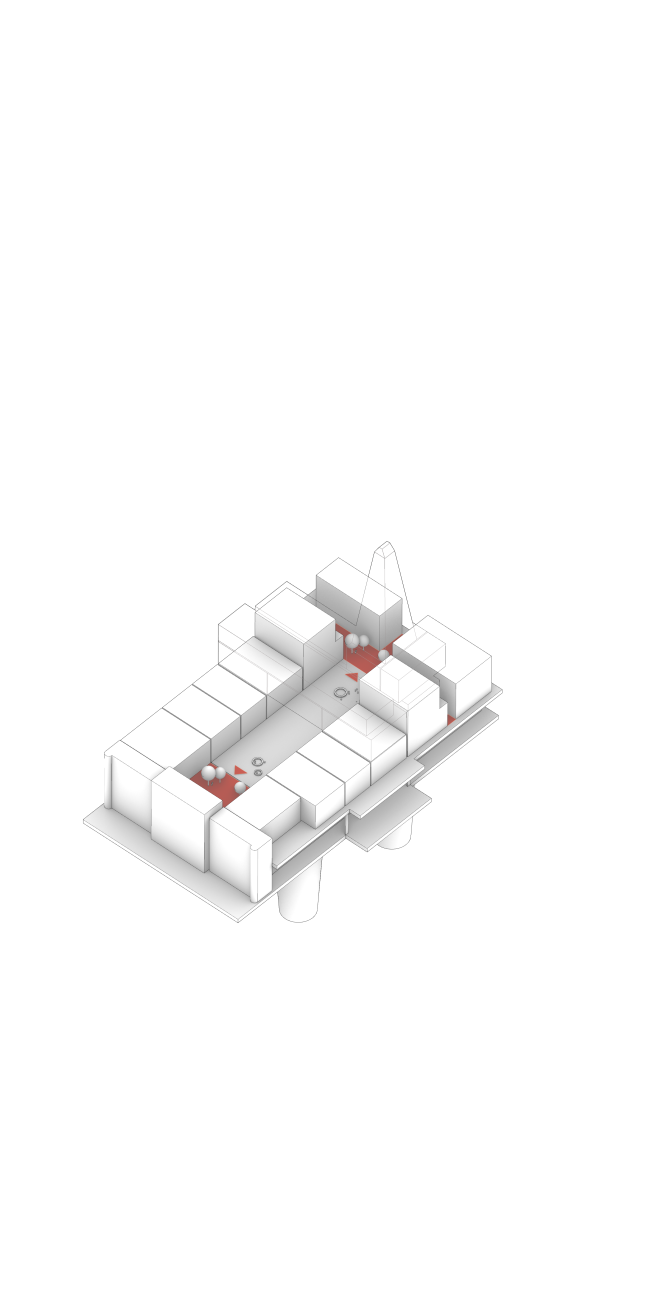
A new patio in the East allows natural light in the center. The extended atrium connects both, the open air space in the east with the new patio in the west.
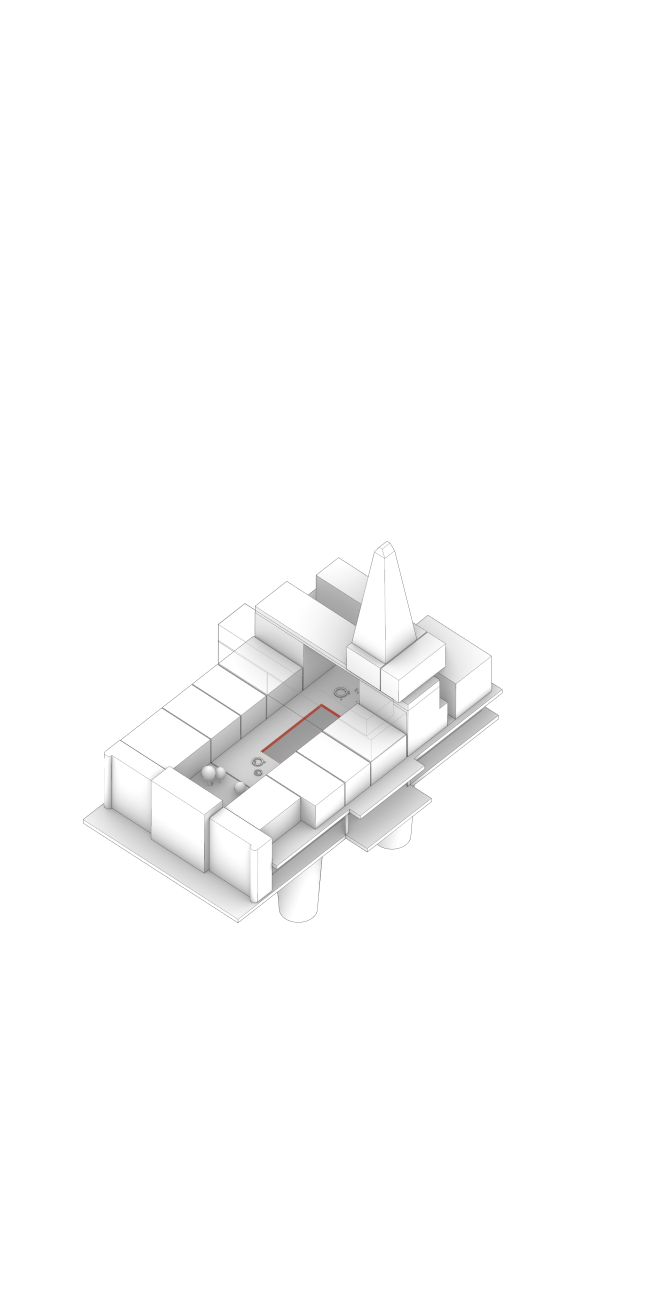
A void is created in order to connect the atrium space with the MSF underneath.
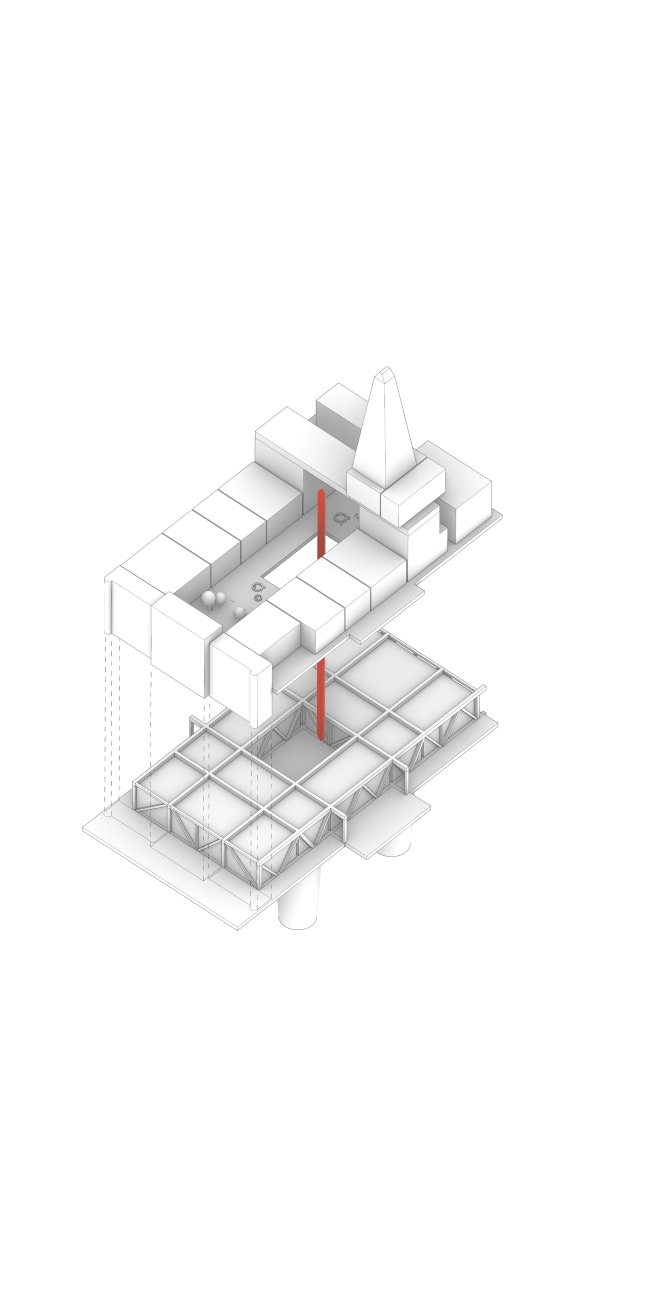
The new main circulation will be placed within the void.
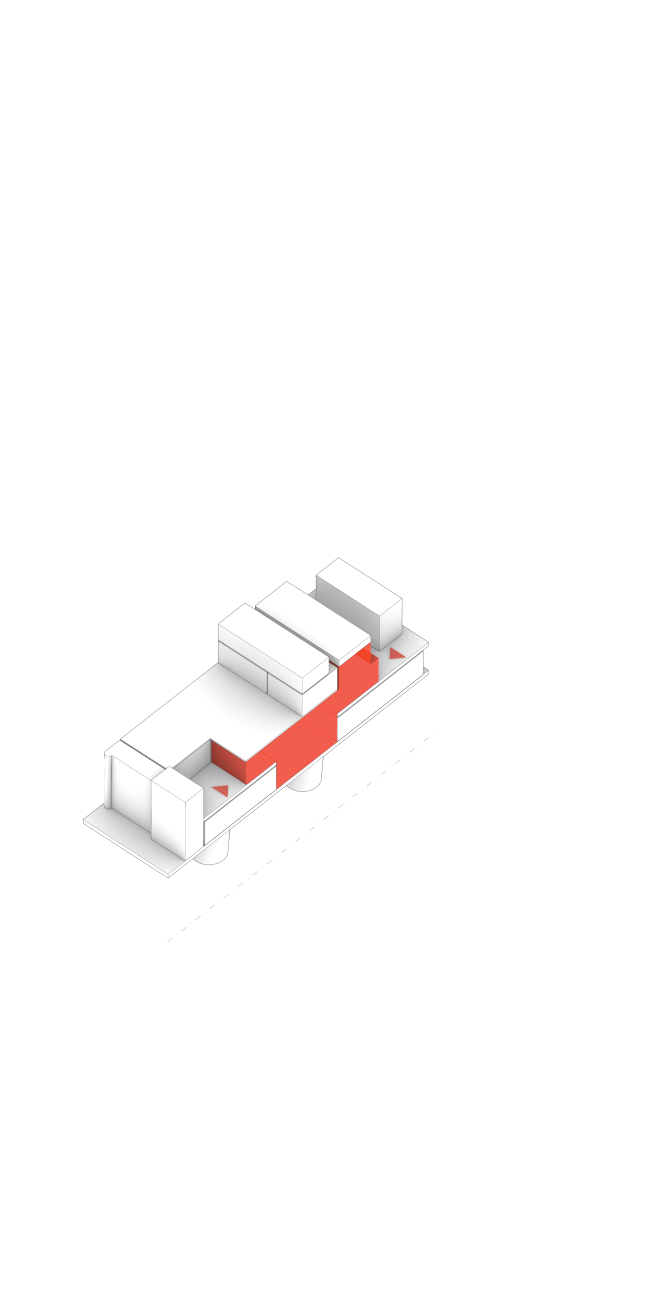
An extensive void links seven floors and stimulates visual connections.
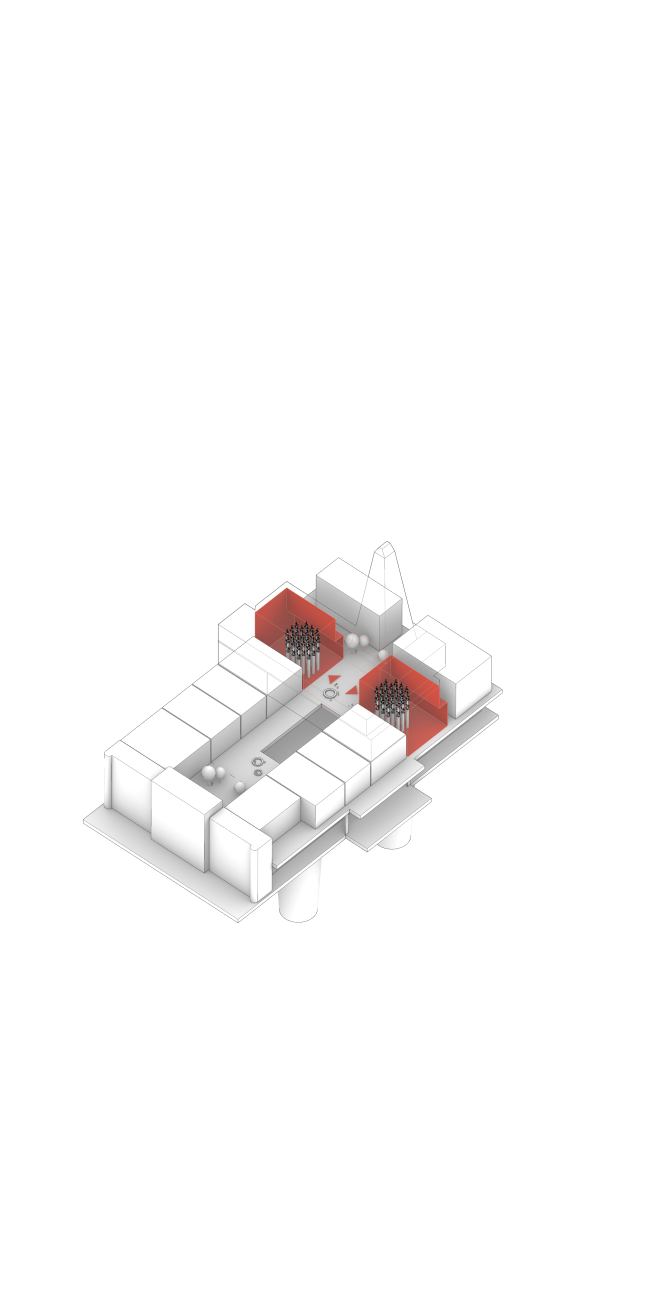
The former drilling towers will be preserved as enties and treated as an objet trouvé. Due to the absence of the module M12, the full height of the drilling unit can be experienced.
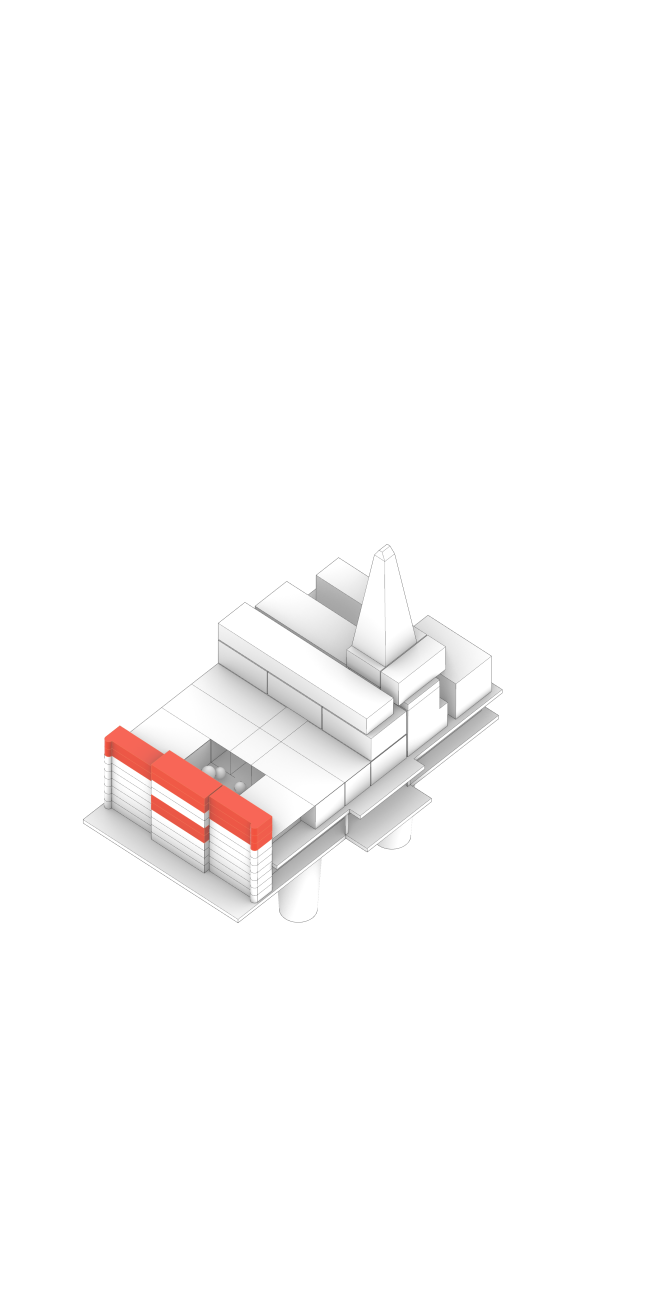
The modul L01 and L02 will be extended with three more storeys, L03 with additional two storeys.
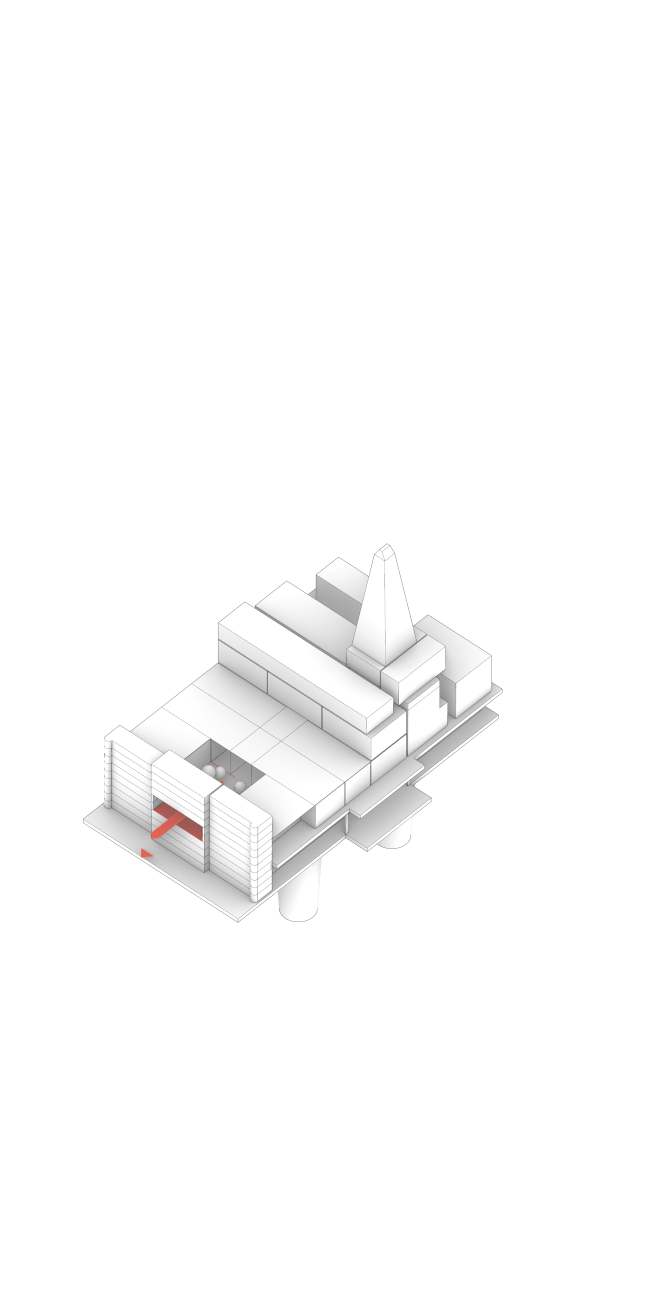
The level between fourth and the fifth floor of modul L02 will be removed in order create a shared double hight living room.
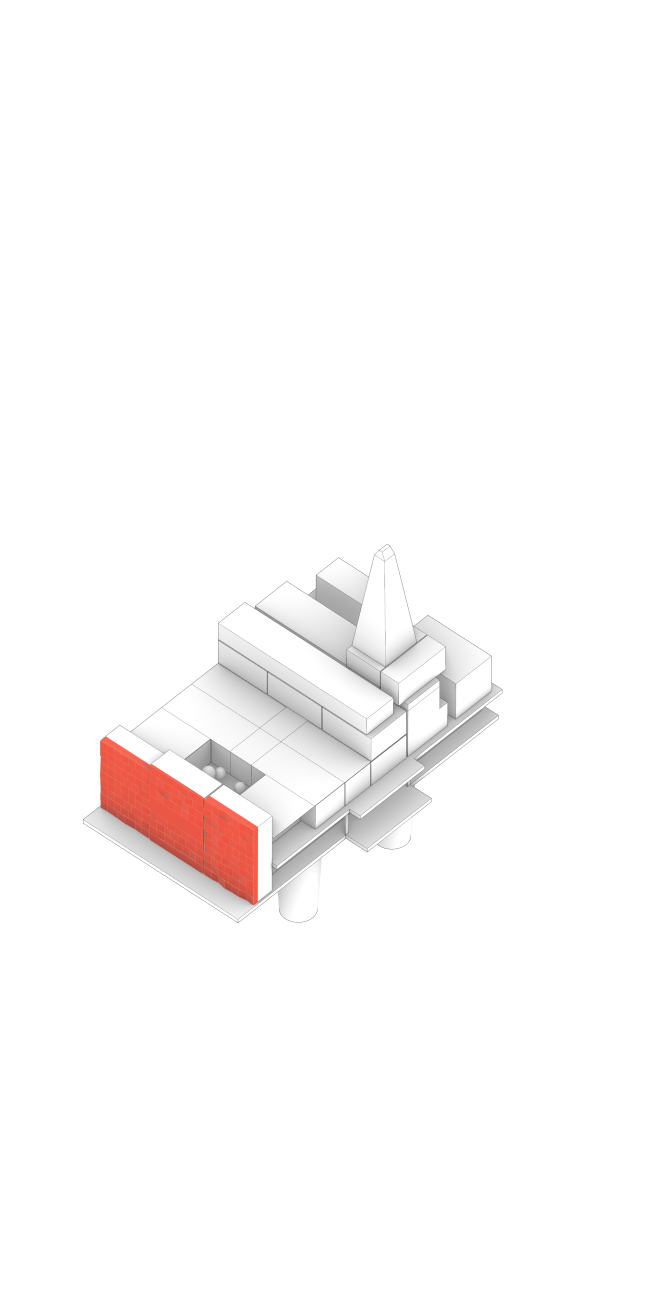
The old facade will be replaced, creating a new extraordinary space facing the Sea.
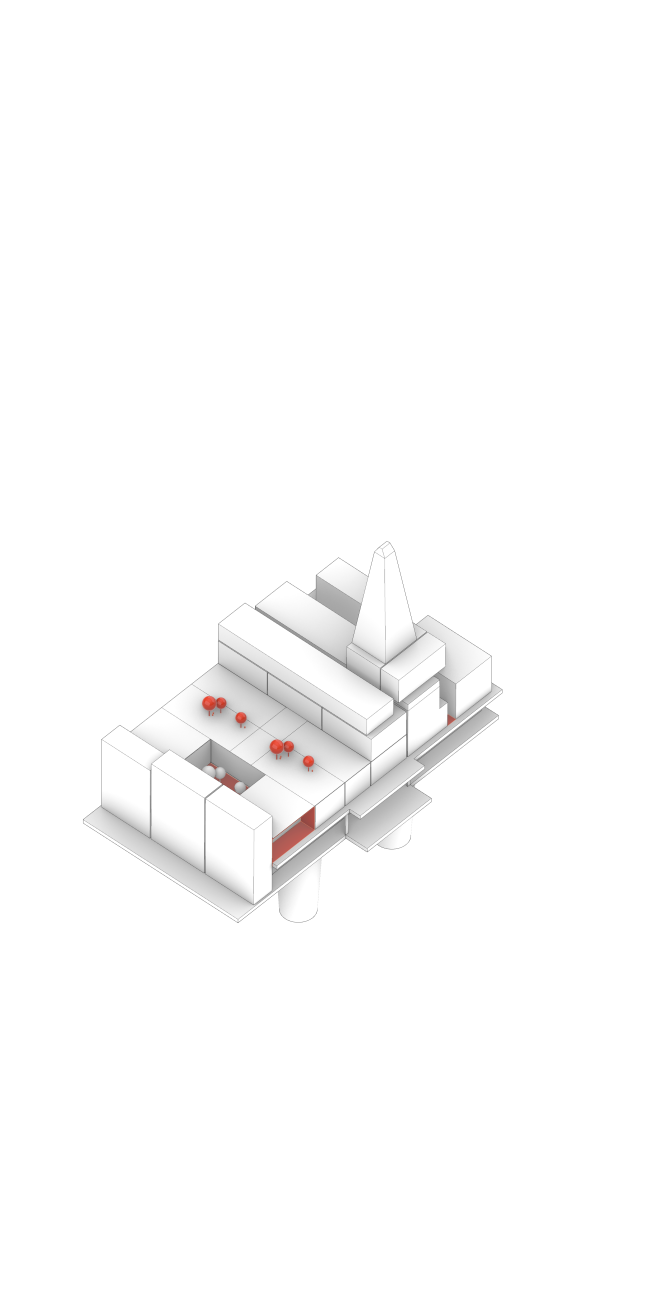
The various outdoor areas offer a wide range of uses and are connected by the old exterior corridor system.
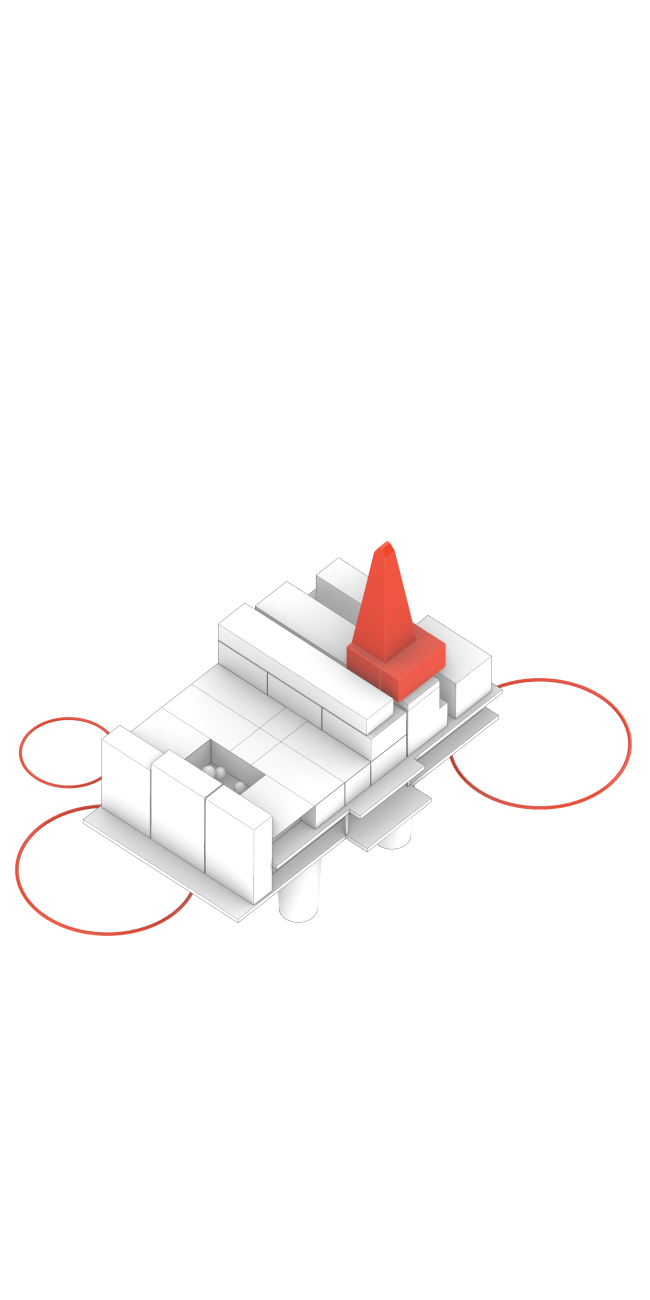
To make the island self-sufficient, the drilling tower will be used for growing food. Further, solar and wind energy plants as well as aquaponics are planned.
Afterlife as permanent research station
Reprogramming Statfjord B
The transformation of the Condeep GBS structure Statfjord B into an integrated, interdisciplinary research facility could provide researchers, policy makers, industry and non-governmental organisations, interested in the ecological and health status of the North Sea, with the permanent opportunity to conduct basic and applied scientific research on the edge of the European continental shelf.

The North Sea is facing major changes as a result of global warming and extensive exploitation by a variety of human activities. The strong intention to understand these changings is underlined by the enormous increase in marine research carried out and the consequently rising number of research institutions, knowledge and data.
Statfjord B could take on the role of a centre in a pan-European network of marine research stations, working collaboratively to address fundamental research questions and urgent environmental problems. The establishment of a cross-national research station would thus underline and promote the increasing importance of marine research in order to achieve sustainable future goals for the European Community. As a common voice for research stations and institutes across Europe, Statfjord B could play a leading role in providing strategic advice to European and international maritime policy makers and stakeholders.
In addition, the state-of-the-art research facility will be able to offer education and training programmes and bring together renowned marine scientists, experts and the interested public. Statfjord B Research Centre will thus become a forum where all stakeholders can come together in a collaborative working environment and discuss issues relevant to the whole society. A marine research centre on the artificial island Statfjord B could thus take on a growing social responsibility to combine basic marine science with society‘s need for knowledge about key processes.
The growing value in connecting Art and Science
A public artist-in-residence programme that will host artists on Statfjord B will support the process of gaining and communicating knowledge
The programme provides artists with access to the platform’s resources, facilities and scientists. During their stay, artists participate in the research processes and use their creative energy to develop projects on scientific topics and to give a new perspective on already existing research questions. In this process, art becomes a tool of communication that connects all parties.
The resultant works of art, performances and exhibitions will furthermore become a great attraction for sustainable tourism. The impact of this interdisciplinary approach will thus benefit all actors, including the public.
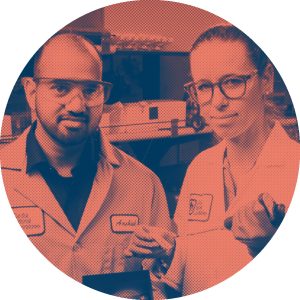
Scientific Experts
Marine Scientists will study the biological, chemical, geological and physical characteristics of the North Sea in a multidisciplinary approach, while focusing on comprehensive fieldwork and data collecting.
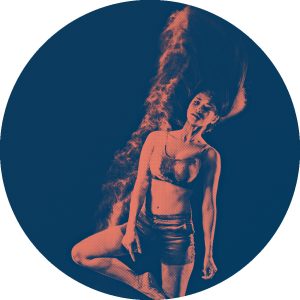
Artists in Residence
Artists can emphasize the importance of scientific work by making it visually accessible, but the growing value in combining art and science lies in the collaborative process of creating new realities, rather than their mere reflections.
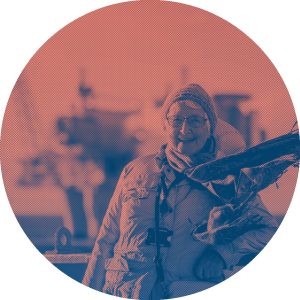
Interested Public
The visual and physical experience of visiting the Statfjord monument and the participatory dialogue with scientific experts will form people’s understanding of the seascape North Sea.

